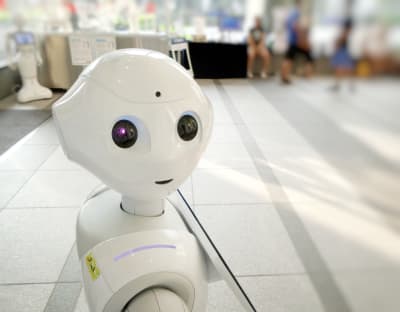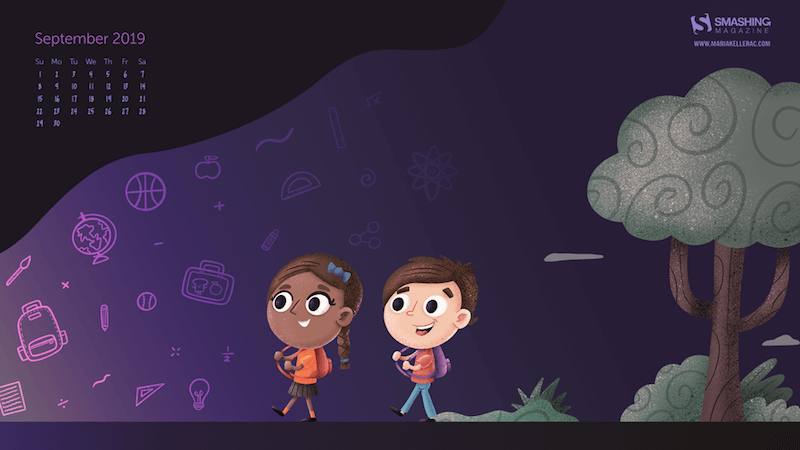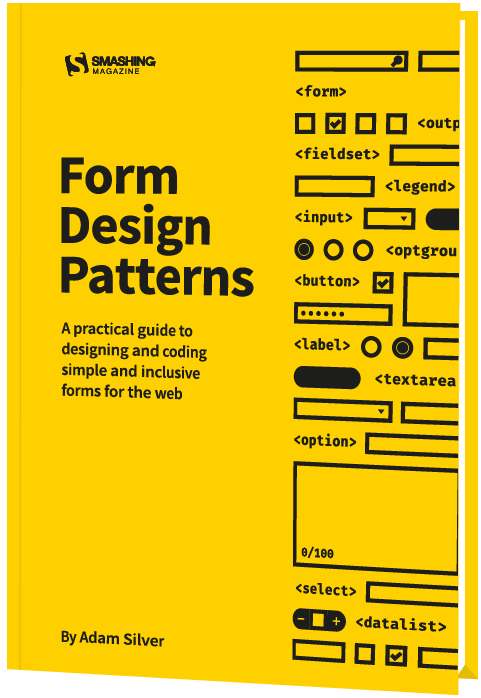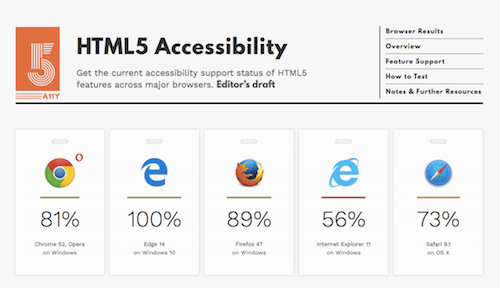
How AI Is Helping Solve Climate Change
How AI Is Helping Solve Climate Change
Nicholas Farmen
Have you heard of the French artist Marcel Duchamp? One of his most famous works is the “fountain” which was created from an ordinary bathroom urinal. In simply renaming this common object, Duchamp successfully birthed a completely new style of art.
The same can be done with AI. Why do humans only have to use this powerful invention to solve business-related issues? Why can’t we think a little more like Duchamp and use this ‘all-powerful’ technology to solve one of the scariest problems that mankind has ever faced?
The Global Threat Of Climate Change
If you’ve read any recent reports and predictions about the future of our climate, you’ve probably realized that mankind is running out of time to find a solution for the global threat of climate change. In fact, a recent Australian policy paper proposed a 2050 scenario where, well, we all die.
To those who aren’t scared of water levels rising 25 meters by 2050, there have been other studies that suggest human hardships are right around the corner. In March of 2012, the World Water Assessment Programme predicted that by 2025, 1.8 billion people on earth will be living in regions with absolute water scarcity.
So what data and research is leading scientists to believe there will be a water or food apocalypse scenario in the future?
According to NASA, the main cause of climate change is the rising amount of greenhouse gases in our atmosphere. And sadly, ‘mother earth’ is not doing this all by herself.
In 1830, humans began engaging in activities that released greenhouse gases, contributing to the rising temperatures that we are feeling today. Some of these activities I refer to include the burning of fossil fuels, the pollution of oceans, and deforestation. However, even the mass production of beef is contributing to climate change.
Now, you may be wondering how humans could combat and limit our greenhouse gas emissions. Obviously, we should be limiting all of the activities that I alluded to above. This would mean limiting our electricity, coal, and oil usage, planting trees, and sadly for many, giving up steak dinners altogether.
But would all of this be enough to undo centuries of atmospheric pollution? Is all of this even accomplishable before humans are forced to face the extinction of their species? I don’t know. Humans haven’t even been able to cease the production of beef, let alone our daily oil-guzzling automobiles and airplanes.
If only there was a very intelligent software that could run some emissions numbers, and tell us if all of these efforts would be enough to prevent future disaster scenarios…

AI Approaches And Environmental Use Cases
Solving any problem takes time. With climate change, it took scientists about 40 years to to gain any sort of understanding of the problem. And that’s fair — humans had to first study the climate to make sure climate change existed, then study the causes of climate change to see the role humans have played. But where are we today after all of this study? Still studying.
And the problem with climate change is that time is not on our side — mankind has to find and implement some solutions relatively fast. That’s where AI could help.
To date, there are two different approaches to AI: rules-based and learning-based. Both AI approaches have valid use cases when it comes to studying the environment and solving climate change.
Rules-based AI are coded algorithms of if-then statementsthat are basically meant to solve simple problems. When it comes to the climate, a rules-based AI could be useful in helping scientists crunch numbers or compile data, saving humans a lot of time in manual labor.
But a rules-based AI can only do so much. It has no memory capabilities — it’s focused on providing a solution to a problem that’s defined by a human. That’s why learning-based AI was created.
Learning-based AI is more advanced than rules-based AI because it diagnoses problems by interacting with the problem. Basically, learning-based AI has the capacity for memory, whereas rules-based AI does not.
Here’s an example: let’s say you asked a rules-based AI for a shirt. That AI would find you a shirt in the right size and color, but only if you told it your size and preferences. If you asked a learning AI for a shirt, it would assess all of the previous shirt purchases you’ve made over the past year, then find you the perfect shirt for the current season. See the difference?
When it comes to helping solve climate change, a learning-based AI could essentially do more than just crunch CO2 emission numbers. A learning-based AI could actually record those numbers, study causes and solutions, and then recommend the best solution — in theory.
AI Impacting Climate Change, Today
To most, AI is buzz word used to describe interesting tech software. But to the companies below, AI is starting to be seen as a secret weapon.
SilviaTerra
Forests are important for our climate. The carbon dioxide that’s emitted by many human activities is actually absorbed by trees. So if we just had more trees.
This is why SilviaTerra was brought to life.
Powered by the funds and technology of Microsoft, SilviaTerra uses AI and satellite imaging to predict the sizes, species, and health of forest trees. Why is this important? It means that conservationists are saved countless hours of manual fieldwork. It also means that we can help trees grow bigger, stronger, and healthier, so they can continue to help our climate.
DeepMind
Sometimes, we may ask ourselves, “What can’t Google do?” Well, it turns out Google can’t really do everything.
Looking to improve their costs (and potentially their carbon footprint), Google turned to a company called DeepMind. Together, the two companies developed an AI that would teach itself how to use only the bare minimum amount of energy necessary to cool Google’s data centers.
The result? Google was able to cut the amount of energy they use to cool their data centers by 35%. But that may not even be the coolest part! DeepMind’s co-founder, Mustafa Suleyman, said that their AI algorithms are general enough to where the two companies may be able to use them for other energy-saving applications in the future.

Green Horizon Project
All of you data-lovers out there know that it’s hard to say you’re impacting something if you’re unable to measure your impact. This is why the Green Horizon Project came about.
IBM’s Green Horizon Project is an AI that creates self-configuring weather and pollution forecasts. IBM created the project with the hope that they could help cities become more efficient, one day.
Their aspirations became a reality in China. Between 2012 and 2017, IBM’s Green Horizon Project helped the city of Beijing decrease their average smog levels by 35%.
CycleGANs
So here’s a term you may never heard of in your life: “GAN.” It stands for Generative Adversarial Network. Basically, it’s a network that generates statistics or information without you having to do anything.
Why is the term important? Because automation is important when you have limited time and resources to solve a problem.
Intellectuals of Cornell University used GANs to create an AI to train itself to produce images that portray geographical locations before and after extreme weather events. The visuals produced by this AI could help scientists predict the impacts of certain climate changes, helping humans prioritize our combative efforts.
Software With The Potential To Impact Climate Change
In studying the number of AI that is already being used to have a positive impact on climate change, you may be thinking that we don’t need any more new software. And maybe you’re not wrong — why don’t we repurpose the software we do have?
With that being said, here are a few software with the potential to be secret weapons:
Airlitix
Airlitix is an AI and machine-learning software that is currently being used in drones. While it was originally developed to automate greenhouse management processes, it could quite easily be used to manage the health of national forests. Airlitix has the capacity to not only collect temperature, humidity, and carbon dioxide data, but the AI can also analyze soil and crop health.
But with humans needing to plant over 1.2 trillion trees to combat climate change, we should consider automating our efforts further. Instead of taking the time to tend to national parks, the Airlitix software could be built upon so that drones could plant our trees, release plant nutrients, or even deter forest arsonists.

Google Ads
Both Google and Facebook have very powerful AI software that they currently use to create relevant consumer ads using consumer browsing data. In fact, Google’s AI ‘Google Ads’ has helped their company earn hundreds of billions in revenue.
While revenue is cool, the Google Ads algorithm currently promotes consumer purchases relatively objectively. Imagine if the AI could be rewritten to prioritize the ads of companies that are offering sustainable products and services.
Nowadays, there isn’t much competition for Google. There’s Bing, Yahoo, DuckDuckGo, and AOL. (Out of the people I know, I don’t know any that use AOL.) If you’re feeling fearless, maybe you could develop a new search engine that helps connect consumers with environmentally-friendly companies.
Sure, it would be hard to compete with companies as large as Google, but you don’t have to compete forever to make a profit. There’s always a chance your startup gets acquired, and then you ride off into the sunset.
AlphaGo
While AlphaGo is an AI software that could help scientists find the next ‘wonder drug,’ it was originally created by DeepMind to teach itself how to master the game of chess. After beating the world’s best chess players, the AlphaGo AI has since moved on to conquer the strategy of more complex board games.
But what do board games have to do with climate change? Well, if the AlphaGo AI can outsmart humans in a game of chess, maybe it can outsmart us in coming up with creative ways to limit and reduce the number of greenhouse gases in our atmosphere.
Future Outlook For AI And Climate
As I see it, the purpose of AI is to assist mankind in solving problems. Climate change has proven to be a complex problem that humans are becoming great at studying, but I have yet to see a very positive future-outlook from environmentalists in the news.
If not to help humans influence climate change directly, couldn’t we use AI to portray doomsday scenarios that scare the world into coming together? Could we use AI to portray positive potential outlooks that would be possible if people were to do more in their daily lives to help triage climate issues?
Even with the latest Amazon fires, I didn’t see any tweets about the idea of using drones to combat the spread of flames. It’s clear to me that even with all of the impressive AI software and tech available to humans today, environmental use cases are still not widespread knowledge.
So my advice to readers is to try the ‘Duchamp approach’ — today. Consider the AI and tech that you use or develop regularly, and see if there’s a way to reimagine it. Who knows, you may be the one to solve a problem that has stumped some of the best climatologists and scientists of our time.
How Improving Website Performance Can Help Save The Planet
Climate change may not seem like an issue that should concern web developers, but the truth is that our work does have a carbon footprint, and it’s about time we started to think about that. Read more →
 (cc, yk, il)
(cc, yk, il)
Articles on Smashing Magazine — For Web Designers And Developers

















































